Books for advanced 5th graders: Books to challenge gifted 5th grade readers
Challenging Books for Young Advanced Readers
Are you trying to find books for your elementary age or middle school age reader who reads at a high school level? It’s tricky! Because it’s important to find a book that is both challenging but also age-appropriate.
Here’s a list of books that are above a 1000 Lexile Measure and appropriate for young advanced readers. All books listed are at a reading level above Lexile 1000. (I used various websites to verify.) This number, the Lexile Measure, indicates the text complexity, more or less. Generally speaking, books that are above 1000 are around upper middle school to high school reading level.
Challenging Books for Young Advanced Readers
I’ve split up these high level books into genre classifications so that your readers can find their favorites.
- fantasy / sci-fi
- historical fiction
- memoir, biographies, and nonfiction
- classics
Fantasy and Sci-Fi
The Hobbit by J. R. R. Tolkien
The classic Tolkien from which everything begins . . . it’s wordy and descriptive and wonderful. Epic fantasy stories weave together a world of magical creatures where evil is threatening the land. The writing is complex, detailed, and intense.
Outcast of Redwall by Brian Jacques
If you like epic fantasy adventures, this is the series for you.
From The Publisher: Abandoned as an infant by his father, the evil warlord Swartt Sixclaw, Veil is raised by the kindhearted Bryony. Despite concerns from everyone at Redwall, Bryony is convinced that Veil’s goodness will prevail. But when he commits a crime that is unforgivable, he is banished from the abbey forever. Then Swartt and his hordes of searats and vermin attack Redwall, and Veil has to decide: Should he join Swartt in battle against the only creature who has ever loved him? Or should he turn his back on his true father?
Hero and the Crown by Robin McKinley
A great girl-power novel.
From The Publisher: Although she is the daughter of Damar’s king, Aerin has never been accepted as full royalty. Both in and out of the royal court, people whisper the story of her mother, the witchwoman, who was said to have enspelled the king into marrying her to get an heir to rule Damar-then died of despair when she found she had borne a daughter instead of a son. But none of them, not even Aerin herself, can predict her future-for she is to be the true hero who will wield the power of the Blue Sword…
Hitchhikers Guide to the Galaxy by Douglas Adams
This book was my all-time favorite in high school! It’s science-fiction canon.
From The Publisher: Douglas Adams’s mega-selling pop-culture classic sends logic into orbit, plays havoc with both time and physics, offers up pithy commentary on such things as ballpoint pens, potted plants, and digital watches . . . and, most important, reveals the ultimate answer to life, the universe, and everything.
Sabriel by Garth Nix
Teens love this book, and so do I. You need to know that it’s about a necromancer so decide if her personal relationship with death and other themes may be too advanced for younger readers. It depends on the reader!
From The Publisher: Sent to a boarding school in Ancelstierre as a young child, Sabriel has had little experience with the random power of Free Magic or the Dead who refuse to stay dead in the Old Kingdom. But during her final semester, her father, the Abhorsen, goes missing, and Sabriel knows she must enter the Old Kingdom to find him. She soon finds companions in Mogget, a cat whose aloof manner barely conceals its malevolent spirit, and Touchstone, a young Charter Mage long imprisoned by magic, now free in body but still trapped by painful memories.
As the three travel deep into the Old Kingdom, threats mount on all sides. And every step brings them closer to a battle that will pit them against the true forces of life and death—and bring Sabriel face-to-face with her own destiny.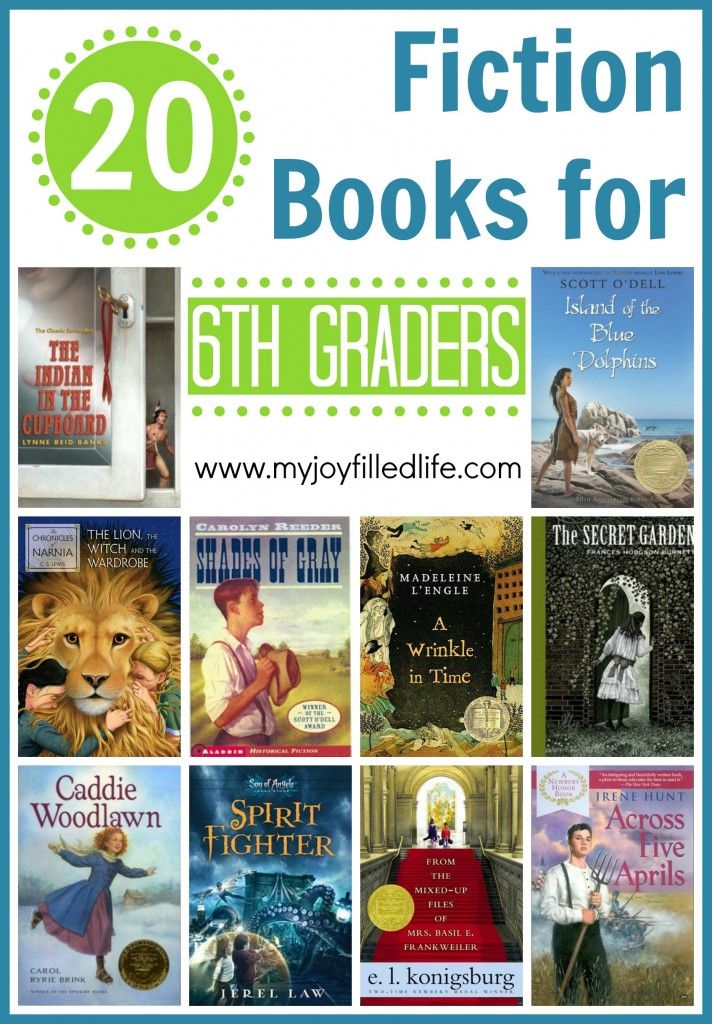
Wizard of Earthsea by Ursula K. Le Guin
From The Publisher: Ged was the greatest sorcerer in Earthsea, but in his youth, he was the reckless Sparrowhawk. In his hunger for power and knowledge, he tampered with long-held secrets and loosed a terrible shadow upon the world. This is the tumultuous tale of his testing, how he mastered the mighty words of power, tamed an ancient dragon, and crossed death’s threshold to restore balance.
The Golden Compass by Philip Pullman
From The Publisher: Lyra is rushing to the cold, far North, where witch clans and armored bears rule. North, where the Gobblers take the children they steal–including her friend Roger. North, where her fearsome uncle Asriel is trying to build a bridge to a parallel world. Can one small girl make a difference in such great and terrible endeavors? This is Lyra: a savage, a schemer, a liar, and as fierce and true a champion as Roger or Asriel could want.
Tales of Beedle the Bard by J.K. Rowling
From The Publisher: Never before have Muggles been privy to these richly imaginative tales: “The Wizard and the Hopping Pot,” “The Fountain of Fair Fortune,” “The Warlock’s Hairy Heart,” “Babbitty Rabbitty and Her Cackling Stump,” and of course “The Tale of the Three Brothers.” But not only are they the equal of fairy tales we now know and love, reading them gives new insight into the world of Harry Potter.
The Wizard of Oz by Frank L. Baum
From The Publisher: Dorothy, her little dog Toto, the Tin Woodman, Scarecrow, and the Cowardly Lion will charm boys and girls of today as much as they delighted children nearly a century ago as they set out on an exciting quest for the elusive Wizard of Oz. Along the way, they’ll encounter the Wicked Witch of the West, the fantastic Winged Monkeys, the Queen of the Field Mice, the kind-hearted Munchkins, and other fanciful creatures.
Historical Fiction
Power of One by Bryce Courtenay
From The Publisher: In 1939, as Hitler casts his enormous, cruel shadow across the world, the seeds of apartheid take root in South Africa. There, a boy called Peekay is born. His childhood is marked by humiliation and abandonment, yet he vows to survive and conceives heroic dreams–which are nothing compared to what life actually has in store for him. He embarks on an epic journey through a land of tribal superstition and modern prejudice where he will learn the power of words, the power to transform lives, and the power of one.
Lizzie Bright and the Buckminster Boy by Gary D. Schmidt
From The Publisher: It only takes a few hours for Turner Buckminster to start hating Phippsburg, Maine. No one in town will let him forget that he’s a minister’s son, even if he doesn’t act like one. But then he meets Lizzie Bright Griffin, a smart and sassy girl from a poor nearby island community founded by former slaves.
Elijah of Buxton by Christopher Paul Curtis
From The Publisher: Eleven-year-old Elijah lives in Buxton, Canada, a settlement of runaway slaves near the American border. Elijah’s the first child in town to be born free, and he ought to be famous just for that — not to mention for being the best at chunking rocks and catching fish.
Midwife’s Apprentice by Karen Cushman
From The Publisher: The girl known only as Brat has no family, no home, and no future until she meets Jane the Midwife and becomes her apprentice. As she helps the sharp-tempered Jane deliver babies, Brat–who renames herself Alyce–gains knowledge, confidence, and the courage to want something from life: “A full belly, a contented heart, and a place in this world.” Medieval village life makes a lively backdrop for the funny, poignant story of how Alyce gets what she wants. A concluding note discusses midwifery past and present.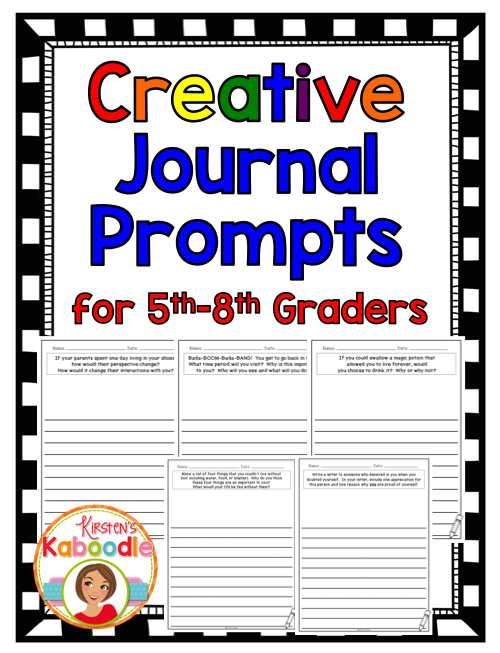
Rascal by Sterling North
From The Publisher: Rascal is only a baby when young Sterling brings him home. He and the mischievous raccoon are best friends for a perfect year of adventure—until the spring day when everything suddenly changes.
The Princess Bride by Barry Denberg
From The Publisher: Rich in character and satire, the novel is set in 1941 and framed cleverly as an “abridged” retelling of a centuries-old tale set in the fabled country of Florin that’s home to “Beasts of all natures and descriptions. Pain. Death. Brave men. Coward men. Strongest men. Chases. Escapes. Lies. Truths. Passions.”
War Horse by Michael Morpurgo
From The Publisher: It is 1914, and Joey, a farm horse, is sold to the army and thrust into the midst of World War I on the Western Front. When Joey is dragged away, his heart aches for Albert, the farmer’s son he is forced to leave behind.In the army the beautiful red-bay horse is trained to charge the enemy, drag heavy artillery, and carry wounded soldiers not much older than Albert off the battlefields.
Island of the Blue Dolphins by Scott O’Dell
From The Publisher: Here, in the early 1800s, according to history, an Indian girl spent eighteen years alone, and this beautifully written novel is her story. It is a romantic adventure filled with drama and heartache, for not only was mere subsistence on so desolate a spot a near miracle, but Karana had to contend with the ferocious pack of wild dogs that had killed her younger brother, constantly guard against the Aleutian sea otter hunters, and maintain a precarious food supply. More than this, it is an adventure of the spirit that will haunt the reader long after the book has been put down. Karana’s quiet courage, her Indian self-reliance and acceptance of fate, transform what to many would have been a devastating ordeal into an uplifting experience.
The Boy in the Striped Pajamas by John Boyne
From The Publisher: Berlin, 1942: When Bruno returns home from school one day, he discovers that his belongings are being packed in crates. His father has received a promotion and the family must move to a new house far, far away, where there is no one to play with and nothing to do. A tall fence stretches as far as the eye can see and cuts him off from the strange people in the distance. But Bruno longs to be an explorer and decides that there must be more to this desolate new place than meets the eye. While exploring his new environment, he meets another boy whose life and circumstances are very different from his own, and their meeting results in a friendship that has devastating consequences.
The Eagle (The Roman Britan Trilogy) by Rosemary Stucliff
From The Publisher: The Ninth Legion marched into the mists of Northern Britain―and they were never seen again.
Marcus has to find out what happened to his father, who led the legion. So he sets out into the unknown, on a quest so dangerous that nobody expects him to return.
Mystery & Adventure
Hatchet by Gary Paulsen
After his plane crashes in the woods, Brian is stranded in the Canadian wilderness with only a hatchet. His journey of survival is incredible and will captivate readers.
The Case of the Peculiar Pink Fan: An Enola Holmes Mystery by Nancy Springer
Sherlock’s sister hones her detective skills in these historical mysteries.
The Egypt Game by Zilpha Neatly Snyder
From The Publisher: The first time Melanie Ross meets April Hall, she’s not sure they have anything in common. But she soon discovers that they both love anything to do with ancient Egypt.
Classics
Frankenstein by Mary Shelley
From The Publisher: Frankenstein; or, The Modern Prometheus, is a novel written by English author Mary Shelley about eccentric scientist Victor Frankenstein, who creates a grotesque creature in an unorthodox scientific experiment.
Little Women by Louisa May Alcott
From The Publisher: Grown-up Meg, tomboyish Jo, timid Beth, and precocious Amy. The four March sisters couldn’t be more different. But with their father away at war, and their mother working to support the family, they have to rely on one another.
Swiss Family Robinson by Johann Wyss
From The Publisher: Following a wild and raging storm, the Swiss family Robinson are stranded at sea. But the thundering waves have swept them off to a tropical island, where a new life awaits them. Their ship is laden with supplies and the island is packed with treasures, so they soon adapt and discover new dangers and delights every day . . .
Dracula by Bram Stoker
From The Publisher: During a business visit to Count Dracula’s castle in Transylvania, a young English solicitor finds himself at the center of a series of horrifying incidents. Jonathan Harker is attacked by three phantom women, observes the Count’s transformation from human to bat form, and discovers puncture wounds on his own neck that seem to have been made by teeth.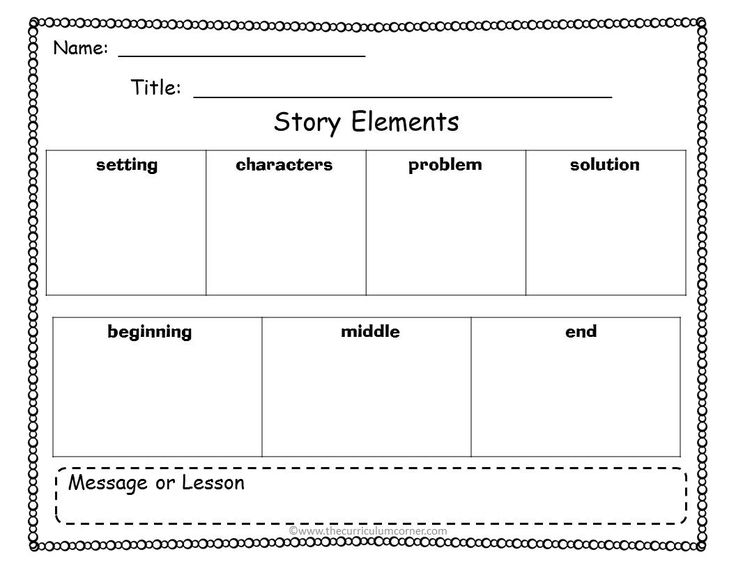
Jungle Book by Rudyard Kipling
From The Publisher: The tales in the book (and also those in The Second Jungle Book which followed in 1895, and which includes five further stories about Mowgli) are fables, using animals in an anthropomorphic manner to give moral lessons. The verses of The Law of the Jungle, for example, lay down rules for the safety of individuals, families and communities. Kipling put in them nearly everything he knew or “heard or dreamed about the Indian jungle.” Other readers have interpreted the work as allegories of the politics and society of the time. The best-known of them are the three stories revolving around the adventures of an abandoned “man cub” Mowgli who is raised by wolves in the Indian jungle. The most famous of the other stories are probably “Rikki-Tikki-Tavi”, the story of a heroic mongoose, and “Toomai of the Elephants”, the tale of a young elephant-handler.
Anne of Green Gables by L.M Montgomery
From The Publisher: When the Cuthberts send to an orphanage for a boy to help them at Green Gables, their farm in Canada, they are astonished when a talkative little girl steps off the train. Anne, red-headed, pugnacious and incurably romantic, causes chaos at Green Gables and in the village. But her wit and good nature endears her to the residents.
Treasure Island by Robert Louis Stevenson
From The Publisher: Set in the eighteenth century, Treasure Island spins a heady tale of piracy, a mysterious treasure map, and a host of sinister characters charged with diabolical intentions. Seen through the eyes of Jim Hawkins, the cabin boy of the Hispaniola, the action-packed adventure tells of a perilous sea journey across the Spanish Main, a mutiny led by the infamous Long John Silver, and a lethal scramble for buried treasure on an exotic isle.
Adventures of Sherlock Holmes by Arthur Conan Doyle
From The Publisher: Venture back in time to Victorian London to join literature’s greatest detective team — the brilliant Sherlock Holmes and his devoted assistant, Dr.
Story of King Arthur and His Knights by Howard Pyle
From The Publisher: The legendary adventures of King Arthur, his Knights of the Table Round, and the court of Camelot come to life in a lively and accessible retelling by Howard Pyle.
Call of the Wild by Jack London
From The Publisher: The story is set in the Yukon during the 1890s Klondike Gold Rush—a period when strong sled dogs were in high demand. The novel’s central character is a dog named Buck, a domesticated dog living at a ranch in the Santa Clara valley of California as the story opens. Stolen from his home and sold into the brutal existence of an Alaskan sled dog, he reverts to atavistic traits. Buck is forced to adjust to, and survive, cruel treatments and fight to dominate other dogs in a harsh climate. Eventually he sheds the veneer of civilization, relying on primordial instincts and lessons he learns, to emerge as a leader in the wild.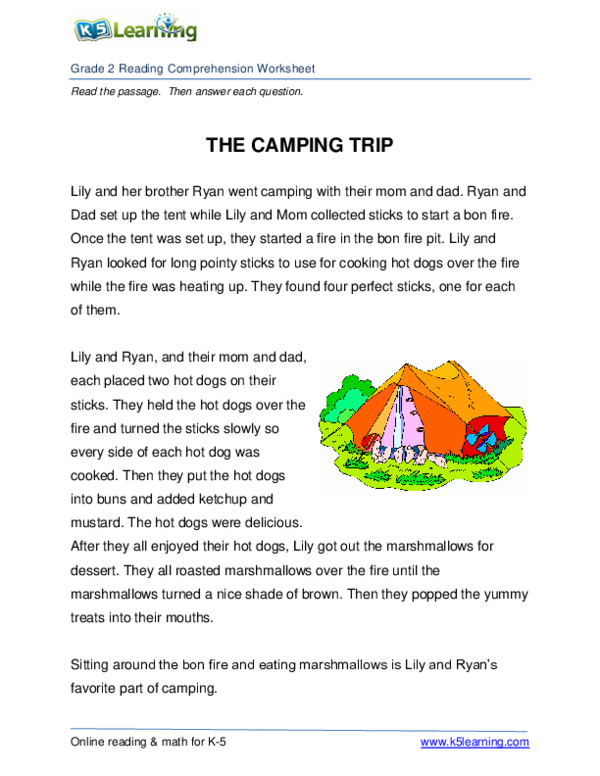
Wind in the Willows by K. Grahame
From The Publisher: Alternately slow moving and fast paced, it focuses on four anthropomorphised animals in a pastoral version of England. The novel is notable for its mixture of mysticism, adventure, morality, and camaraderie and celebrated for its evocation of the nature of the Thames valley.
The Incredible Journey by Shelia Branford
From The Publisher: An inquisitive Labrador retriever, friendly bull terrier, and courageous Siamese cat set out through the Canadian wilderness to find their owner in this truly “incredible” adventure. Instinct tells them that the way home lies to the west and together the three house pets face hunger, the natural elements, and wild forest animals as they make their way home to the family they love.
Memoirs, Biographies, and Nonfiction
I Am Malala: How One Girl Stood Up for Education and Changed the World (Young Readers Edition) by Malala Yousafzai with Patricia McCormick
This is a powerful, well-told personal story from the wise, self-reflective perspective of Malala Yousafzai and is appropriate for middle-grade readers.
Undefeated: Jim Thorpe and the Carlisle Indian School Football Team by Steve Sheinkin BIOGRAPHY
You don’t have to be a football fan to be mesmerized by this incredible underdog story of grit with the history of football as a backdrop. You don’t really know the history of football until you’ve read the history of Carlisle Indian School and Jim Thorpe.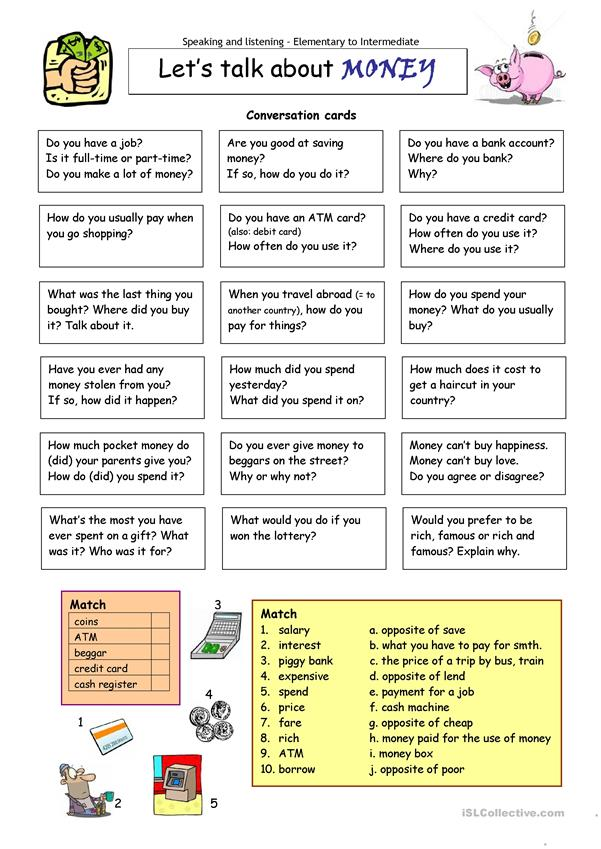
Unbroken by Laura Hillenbrand
After Louis Zaperini’s WWII plane goes down in the open ocean — he’s starving, adrift, and prey to enemy planes. His triumphant survival is nothing short of incredible. You’ll be amazed and inspired at his incredible true story.
Hidden Figures (Young Readers’ Edition) by Margot Lee Shetterly
A well-crafted blend of the historical realities and inspiring life stories of four mathematically talented women who worked to build this country’s aviation and aeronautical programs starting from the Civil Rights era to the Space Race all the way to the Cold War.
The Boys Who Challenged Hitler: Knud Pedersen and the Churchill Club by Phillip Hoose NONFICTION
If you’re teaching leadership or becoming change-makers, use this book! Knut and his friends couldn’t endorse their country of Denmark’s position on allying with the Nazi’s so they decided to do what they could to fight back. Even though they were just teenagers, they managed small acts of sabotage. But more than that, they inspired a full Danish resistance movement!
Bomb: The Race to Build –and Steal–the World’s Most Dangerous Weapon by Steve Sheinkin
Another knock-out nonfiction book from the talented Steve Sheinkin! I’m so impressed by how Sheinkin makes this story come ALIVE like it’s an adventure/mystery/thriller and not real life and true.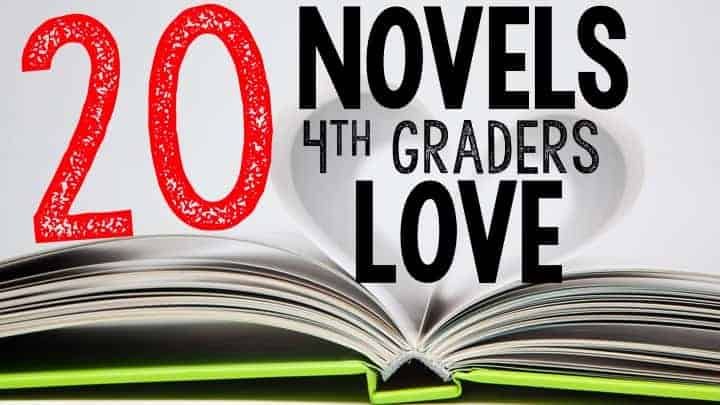
Untamed The Wild Life of Jane Goodall by Anita Silvey, forward by Jane Goodall
This is not your average biography for kids with small font and ugly black and white photos. No, it’s so much better! Untamed is an excellent depiction of Jane Goodall’s life with kid-friendly language using kid-appealing layouts of colorful photos. Interesting insets throughout describe tips for kids and information such as sign language. I love the Gombe Family Scrapbook at the end with some of the significant chimps in Jane’s life. I also found it really interesting to learn how this English girl read about Africa as a child and fell in love with it.
Dog Who Wouldn’t Be by Farley Mowat
From The Publisher: Mutt’s pedigree was uncertain, but his madness was indisputable.
All Things Bright and Beautiful by James Herriot
From The Publisher: All Things Bright and Beautiful is the beloved sequel to Herriot’s first collection, All Creatures Great and Small, and picks up as Herriot, now newly married, journeys among the remote hillside farms and valley towns of the Yorkshire Dales, caring for their inhabitants—both two- and four-legged. Throughout, Herriot’s deep compassion, humor, and love of life shine out as we laugh, cry, and delight in his portraits of his many, varied animal patients and their equally varied owners.
You Might Also Like:
Historical Fiction Chapter Books
Best Fantasy Chapter Books for Kids
25 Best Books for 5th Graders
Fifth grade is a vital milestone in a child’s life.
However, check your 5th grader’s reading level and areas of interest, this can help you select the books for them. Usually, 5th graders have advanced reading levels unless they struggle to read due to problems like dyslexia, autism, etc.
In this article, we’ve picked the best 25 books for fifth graders across various niches like fiction, non-fiction, mystery, etc. So, let’s look at some good books to read for 5th graders that your kids will love.
25 Books for 5th Graders to Learn and Take Inspiration From
On average, reading levels for a fifth-grader range between 22 to 30+ on Reading Recovery and 50 on D.R.A. levels. But that can vary from child to child. Thus, teachers should use a 1:1 approach to assess the accurate reading level.
Based on the general reading level, here are some popular books for 5th graders:
Best Books for 5th Graders: General Fiction
1. Wonder by R.J. Palacio
Subject: Prejudice, Self-acceptance, Friendship, Bullying
Amazon Ratings: 4.6/5
Price: $9.67
R.J. Palacio wrote a beautiful piece of children’s literature based on a real-life incident. The book is inspired by an incident when the writer’s son started to cry after seeing a girl with a facial deformity. Palacio attempted to remove his son from the situation so the girl and her family won’t feel hurt, but it worsened the situation. Later, taking inspiration from Natalie Merchant’s song, she penned this book for 5th graders to teach them a valuable lesson on friendship, acceptance, and bullying.
2. New Kid by Jerry Craft
Subject: Racism
Amazon Ratings: 4.
Price: $8.64
This is a graphic novel that will help your fifth-grader understand how racism still exists in our modern society. The story revolves around a seventh-grade student, Jordan, who experiences a culture shock after enrolling in a private school. This book talks about a critical issue – how American Africans still struggle to fit into society. It also talks about a child’s experience in a new academic environment.
3. Out of My Mind by Sharon M. Draper
Subject: Disability, Acceptance
Amazon Ratings: 4.7/5
Price: $7.49
This is an excellent book to read for 5th graders because it talks about acceptance and celebrating disability. The book is narrated by Melody, who has cerebral palsy. She is a smart girl, but her inability to express her thoughts physically and verbally makes her an odd one out in the crowd. However, when she enters the fifth grade, she gets a machine to communicate with other people.
4. Anne of Green Gables by L.M. Montgomery
Subject: Resourcefulness, Determination, and Presence of Mind
Amazon Ratings: 4.7/5
Price: $5.99
You can encourage your fifth grader read this book to enhance their knowledge about the 19th century. This is the story of Anne, a 14-year-old orphan. She is mistakenly adopted by two siblings who want to adopt a boy to help them around their farm. It is a beautiful tale of how she wins everyone’s hearts with her dramatic and intelligent character. She is a determined person who is ready to take on any challenge. Your child will learn a lot from her adventurous story.
5. Nothing’s Fair in Fifth Grade by Barthe Declemente
Subject: Judging, Bullying, Physical Appearance
Amazon Ratings: 4.
Price: $7.99
Do you want to teach your fifth grader that they should never judge a person based on their physical appearance? If so, Nothing’s Fair in Fifth Grade is the perfect tool. It is the story of two fifth-graders, Jane and Elise. Elise is a plump girl. Therefore, Jane assumed she had stolen book club money to buy lunch. The story teaches how bullying can impact someone, why children shouldn’t do it, and how those who face or witness it should stand up against bullies.
Related Reading: Free Online Classic Storybooks for Kids
Best Non-fiction Books for 5th Graders
6. Accidental Archeologists: True Stories of Unexpected DIscoveries by Sarah Albee
Subject: Archaeological Stories
Amazon Ratings: 4.5/5
Price: $9.79
If you’re looking for fun books for 5th graders, this is a great find with amazing graphics and gripping adventures.
7. Do You Know Where the Animals Live? by Peter Wohlleben
Subject: Animal Science
Amazon Ratings: 4.5/5
Price: $15.59
New York Times bestselling author, Peter Wohlleben, has created a fantastic visual book for young children to learn about animals. Your child will learn about different animals and their habitats in a question-answer style. The book contains questions like – Are worms afraid of the rain? Do fish use farts to communicate? Two pages are dedicated to interesting information and colorful illustrations to answer every question.
8.
Subject: Improving Vocabulary
Amazon Ratings: 4.9/5
Price: $16.69
This is a popular book for 5th graders to improve their English vocabulary. You will find some unique and modern English words in this book with clear illustrations. Children will become wordsmiths with over 400 unique word collections like bubble shoot, a moonbow, haberdashery, ichthyologist, Luddite, etc.
9. What Breathes Through Its Butt? Mind-Blowing Science Questions Answered by Dr. Emily Grossman
Subject: Science
Amazon Ratings: 4.5/5
Price: $15.39
This is an interactive and fun book for 5th graders or even younger children. It contains everyday science questions such as; why is your elbow called your funny bone? How could you escape the grip of a crocodile’s jaw? Which animal can breathe through its butt? This book’s handwriting, cool emojis, and graphics are engaging and will appeal to kids.
10. Girls Think of Everything: Stories of Ingenious Inventions by Women by Catherine Thimmesh
Subject: Biography
Amazon Ratings: 4.5/5
Price: $9.99
An award-winning author and illustrator collaborate to create this graphical biographic book. It is a fictional narration of real stories, including suspense and thriller. Catherine Thimmesh has successfully made boring and mundane biographies into exciting and innovative stories. Most biographies are of women who had discovered something remarkable in their lives.
Related Reading: Popular Nonfiction Books for Kids to Read & Cherish
Top Rated Books for 5th Graders on Adventure
11. Trapped in a Video Game by Dustin Brady
Subject: Virtual Action
Amazon Ratings: 4.9/5
Price: $4.
This is a fun and adventure-loaded book for your enthusiastic fifth grader. The book’s storyline revolves around a 12-year-old boy who likes to play video games with his friend. As they were about to complete a high level in the game, they suddenly find themselves inside the game. The book is about how these two friends enter a video game and find their way out.
12. Hatchet by Gary Paulsen
Subject: Self-Dependence, Confidence, Problem-Solving
Amazon Ratings: 4.7/5
Price: $6.10
This book has a strong message of self-dependence. It is a story of a young boy, Brian Roberson, who is on his way from New York to Canada to visit his grandfather. However, his plane crashes midway, and he finds himself on the banks of a wild lake in Canada. The story follows the adventurous journey of Brian and how he learned to hunt, start a fire and survive in the wild.
13. My Side of the Mountain by Jean Craighead George
Subject: Solitude, Survival, Balance
Amazon Ratings: 4.8/5
Price: $7.59
This is an illustrated novel based on 12-year-old Sam Gribley. He doesn’t like living in his crowded family apartment. So, he moves to his grandfather’s abandoned farmhouse in the Catskill Mountains. Sam must rely on his survival skills to reach the farmhouse and hunt animals for food. Throughout the story, Sam encounters several challenges. In the end, he decides to balance solitude and his family.
14. The Phantom Tollbooth by Norton Juster
Subject: Time Management, Boredom
Amazon Ratings: 4.8/5
Price: $7.78
This is a story of a boy named Milo, who has a room full of toys and books but is still bored.
He also goes to the Island of Conclusions, where you can reach by jumping. He soon learns life is anything but boring. It is an enjoyable read for 5th graders centered around the love for learning.
15. Book Scavenger by Jennifer Chambliss
Subject: Friendship, Family, Forgiveness
Amazon Ratings: 4.7/5
Price: $8.99
New York Times bestseller author, Jennifer Chambliss, has written this book starring Emily and her friend James. After moving to San Francisco, home of her literary idol Garrison Griswold, she discovers that he has been attacked and left in a coma. So, she starts an adventure with her friend to find out who has attacked Griswold.
Best Fantasy Books for 5th Graders
16. The Little Prince by Antoine de Saint-Exupéry
Subject: Responsibility
Amazon Ratings: 4.8/5
Price: $6.81
This fantasy story begins when a pilot crashes in the Sahara desert. While fixing his plane, the pilot meets a young and curious boy. The young boy tells the pilot he is a prince who has embarked on an adventure to seek knowledge to understand his planet better. The book is philosophical from a child’s perspective and can help to develop your child’s interest in literature.
17. The Hobbit by J.R.R.
Subject: Take Risk, Come out of Comfort Zone
Amazon Ratings: 4.6/5
Price: $11.91
This classic book follows Bilbo Baggins, a quiet and respectful hobbit.
18. Where the Mountain Meets the Moon by Grace Lin
Subject: Gratitude
Amazon Ratings: 4.8/5
Price: $13.78
The book revolves around a 10-year-old spirited girl, Minli. She is adventurous and loves her family, who struggle to make ends meet. One day, she sets out on a quest to bring good fortune to her family and the village. Along the way, she makes new friends – a dragon, a poor boy, and a prince. The tale of how they find the fortune will engage and entertain your kids and give them a valuable lesson on kindness.
19. A Wrinkle in Time by Madeline L’Engle
Subject: Love, Self-value
Amazon Ratings: 4.
Price: $8.49
This is a fantasy story of Meg, whose father has been missing for two days. One night, Meg and her brother meet Mrs. Whatsit, their eccentric neighbor. She learns about The Tesseract, the power to transport to the universe by folding time and space. Meg embarks on a magical journey to find her father along with her brother and classmate. It is a wonderful book about love, individuality, and imagination.
20. The Lion, the Witch, and the Wardrobe by C.S. Lewis
Subject: Unitedness
Amazon Ratings: 4.6/5
Price: $8.49
This story revolves around four siblings – Peter, Lucy, Susan, and Edmund. They enter the enchanted land of Narnia from an old wardrobe. Once there, they realize that all of this was destined, and they must now unite with Aslan to defeat an evil queen – the White Witch.
Best Historical Fiction Books for 5th Graders
21.
Subject: Redemption, Belongingness
Amazon Ratings: 4.5/5
Price: $6.78
This is a children’s novel about a girl named Karana. She is on a journey of self-discovery as she is stranded alone on the island her tribe used to live on for years. She finds solace among the island’s animals and learns how to survive and care for the world. This is a good book for 5th graders to teach them the importance of hanging out with the people who support you and allow you to grow as a person.
22. Number the Stars by Lois Lowry
Subject: Difficulties of Growing Up
Amazon Ratings: 4.7/5
Price: $7.99
The story revolves around Annemarie, who is 10 years old and lives in Copenhagen with her family in 1943. During World War 2, she risks her life to help her Jewish friend escape the Nazis.
23. Esperanza Rising by Pam Muñoz Ryan
Subject: Love, Struggles, Sacrifice
Amazon Ratings: 4.5/5
Price: $5.34
This is a fictional book for young adults following Esperanza. She is the daughter of a wealthy landowner in Mexico. However, her family meets with a tragedy, and they fly to the United States during the great depression and adjust to their new life as farm workers. The story helps children understand how wealth is never more important than family and friends.
24. The Watsons Go to Birmingham–1963 by Christopher Paul Curtis
Subject: Friendship, Adolescence, Family
Amazon Ratings: 4.7/5
Price: $8.99
This book focuses on the turbulent times during the civil rights movement.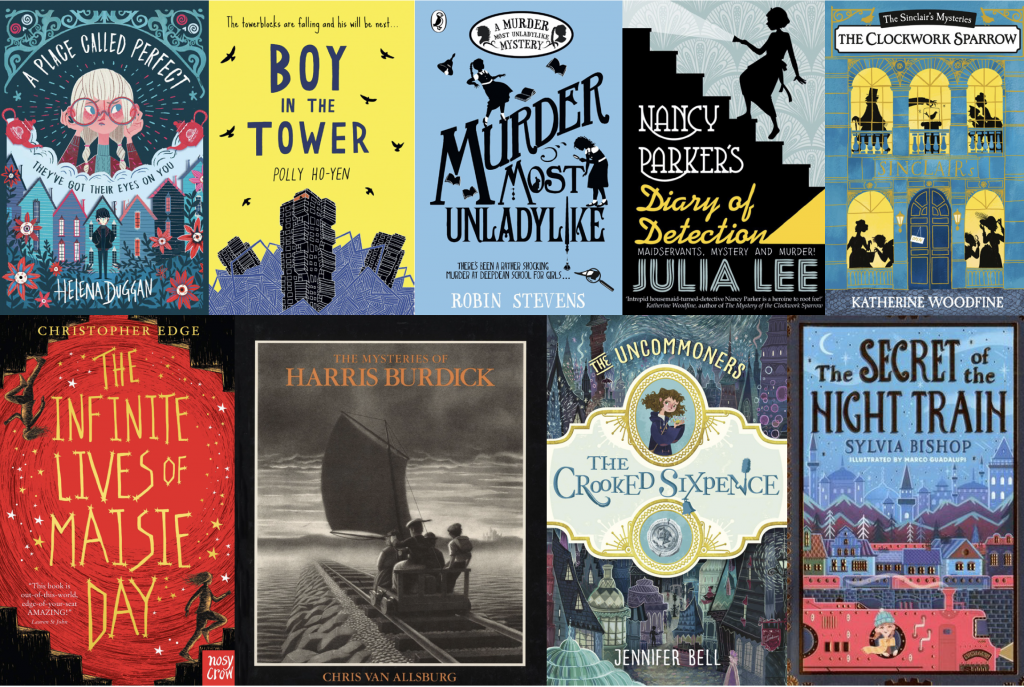
25. The Evolution of Calpurnia Tate by Jacqueline Kelly
Subject: Female Empowerment
Amazon Ratings: 4.7/5
Price: $8.99
The story is about Callie, who has just turned twelve. She struggles to meet her mother’s and society’s expectations for women in 1899. One day, she borrows her grandfather’s copy of The Origin of Species by Charles Darwin. This sparks her interest in Darwin’s theory of evolution and new inventions. So she spents her days cooking and sewing while learning evolution in her free time.
Pick a Book and Get Started!
There you have it; 25 really good books for 5th graders covering different genres.
Frequently Asked Questions (FAQs)
What are the best genres for 5th graders to read?
Fifth graders are advanced readers capable of understanding complex texts. Thus, parents and teachers should try introducing different genres like fiction, non-fiction, historical fiction, science fiction, poetry, and more.
What are the benefits of reading for 5th Graders?
Reading is vital for children of all ages. However, fifth-grade students need to read more often because:
- It helps improve their creativity and imagination.
- Develops their vocabulary.
- Boosts memory.
- Enhances concentration and their attention span.
- Improves writing skills.
- Reduces stress and relaxes their mind.
Free books
last update 04/03/2022
On this page we place materials (full texts) freely
distributed books
(primarily the MCNMO publishing house).
see also
Vitaly Arnold Internet Library
and the library of the site math.ru.
Latest receipts
- Issue 28 of the collection “Mathematical Education”
- Collections “We teach mathematics” -8 and -9
- A. Shen. Permutations
nine0013 - V.A.Uspensky. Proceedings in NOT Mathematics (2nd ed.). Book 1. In memory of the departed. Publication apparatus
- N. A. Vavilov, V. G. Khalin, and A. V. Yurkov. Mathematica for the non-mathematician
About formats
Files in ps (and even ps.gz ) format can be viewed
(and print) using programs
ghostscript and gsview
to view files in the pdf format, may come in handy
Adobe Reader or Sumatra PDF;
files in djvu 9 format0027 can be viewed using the program
WinDjView (or the same Sumatra PDF).
Many texts prepared using the program
TeX (by Donald Knuth). Can
also use the Russification of Alexander
Cherepanov. Keep in mind that layout depends heavily on
used Russification.
Materials
For the meaning of copyright marks, e.g. (c2), see
at the end of the page.
Collections
- Collection “Mathematical Education” (c1)
nine0011 - Issue 28 (2021) (pdf)
- Issue 27 (2021) (pdf) / (@mathnet.ru)
- Issue 26 (2020) (pdf) / (@mathnet.ru)
- Issue 25 (2020) (pdf) / (@mathnet.ru)
- …
- Issue 5. M.: MTSNMO, 2011, 176 p., ISBN 978-5-94057-847-5 (pdf, 1M)
- Issue 4. Moscow: MTsNMO, 2009, 224 pp., ISBN 978-5-94057-508-5 (pdf, 1M)
- Issue 3. M.: MTsNMO, 2006, 164 p., ISBN 5-94057-259-6 (pdf, 1.4M)
- Issue 2. M.: MTSNMO, 2005, 216 p., ISBN 5-94057-069-0 (pdf, 1.2M)
- Issue 1. M.: MTSNMO, 2004, 264 p., ISBN 5-94057-068-2 (pdf, 1.6M)
- Student readings of NMU, Issue 1.
M.: MTSNMO, 2000, 224 p., ISBN 5-
6-52-9 (pdf, 1.6M)
nine0013
- We teach mathematics-9, M.: MTSNMO, 2020 (pdf, 3M) / (@mathedu.ru)
- We teach mathematics-8, M.: MTSNMO, 2019 (pdf, 2M) / (@mathedu.ru)
- We teach mathematics-7, M.: MTSNMO, 2018 (pdf, 2M) / (@mathedu.ru)
- Teaching Mathematics-6, Moscow: MTsNMO, 2017 (pdf, 2M) / (@mathedu.ru)
- We teach mathematics-5, M.: MTSNMO, 2015 (pdf, 4.5M) / (@mathedu.ru)
nine0013 - We teach mathematics-4, M.: MTSNMO, 2014 (pdf, 2M) / (@mathedu.ru)
- Teaching mathematics-3, M.: MTSNMO, 2013 (pdf, 8M) / (@mathedu.ru)
- We teach mathematics-2, M.: MTSNMO, 2009 (pdf, 1.5M) / (@mathedu.ru)
- We teach mathematics-1, M.: MTSNMO, 2006 (pdf, 1M) / (@mathedu.
ru)
Books
Series pages:
[
“Library “Mathematical Education”” |
brochures of the Summer School “Modern Mathematics”
]
- A. V. Hakobyan.
Geometry in Pictures (1st ed.). (c2)
M., 2011
(pdf, 0.5M) - A. V. Akopyan, A. A. Zaslavsky.
Geometric properties of curves of the second order. (c2)
M.: MTSNMO, 2007, 136 p., ISBN 978-5-94057-300-5
(pdf, 3.7M) - V. B. Alekseev.
Abel’s theorem in problems and solutions. (c2).
M.: MTSNMO, 2001, 192 p., ISBN 5- - N. B. Alfutova, A. V. Ustinov.
Algebra and number theory for mathematical schools. nine0004(c2)
M.: MTSNMO, 2001, 264 p., ISBN 5-94057-038-0
(pdf, 1.9 Mb) - E.Yu.Amer.
Hyperbolicity according to Kobayashi: some algebro-geometrical aspects. (c2)
M.: MTSNMO, 2010, 48 p., ISBN 978-5-94057-572-6
(pdf, 0.5M),
(TeX gzipped, 60K) - D. V. Anosov.
A look at mathematics and something from it.(c2)
MTSNMO, 2000, 24 p., ISBN 5-94057-111-5.
[MP library]
(pdf, 0.2M) - D. V. Anosov.
Differential equations: sometimes we solve, sometimes we draw. nine0004(c2)
MCNMO, 2008, 200 pp., ISBN 978-5-94057-398-8
[brochure LSHSM]
(pdf, 1.7M) - D. V. Anosov.
From Newton to Kepler (c2)
MCNMO, 2006, 272 p., ISBN 978-5-94057-229-4
(pdf, 1.8M) - I. V. Arzhantsev.
Gröbner bases and systems of algebraic equations. (c2)
MTSNMO, 2003, 68 p.
[brochure LSHSM]
(pdf, 0.5M) - I. V. Arzhantsev.
Graded algebras and Hilbert’s 14th problem. (c2)
MTsNMO, 2009, 64 p.
[brochure LSHSM]
(pdf, 0.5M) - V. I. Arnold.
Astroidal geometry of hypocycloids and Hessian topology of hyperbolic polynomials. (c2)
MTSNMO, 2001.
[brochure LSHSM]
(pdf, 1.2M) - V. I. Arnold.
Real algebraic geometry. (c2)
MTSNMO, 2009, 88 p.
(pdf, 1.3M) - V. I. Arnold.
Geometry of complex numbers, quaternions and spins.(c2)
M.: MTSNMO, 2002, 40 p., ISBN 5-94057-025-9
(pdf, 0.4M), - V. I. Arnold.
Euler groups and arithmetic of geometric progressions. nine0004(c2)
M.: MTSNMO, 2003, 44 p., ISBN 5-94057-141-7
(pdf, 0.3M) - V. I. Arnold.
Dynamics, statistics and projective geometry of Galois fields. (c2)
M.: MTSNMO, 2005, 72 p., ISBN 5-94057-222-7
(pdf, 0.5M) - V. I. Arnold.
Tasks for children from 5 to 15 years old. (c2)
Moscow: MTsNMO, 2004, 16 p., ISBN 5-94057-183-2
(pdf, 0.2M) - V. I. Arnold.
Mathematical understanding of nature (c2)
M.: MTSNMO, 2011.
(pdf, 2.4M) - V. I. Arnold.
nine0003 Does school need mathematics? (c2)
M.: MTSNMO, 2004, 32 p., ISBN 5-94057-007-0
(pdf, 0.3M) - V. I. Arnold.
Chained shots. (c2)
2nd ed., MTSNMO, 2009.
[MP library]
(pdf, 3.3M) - V. I. Arnold.
Experimental observation of mathematical facts (c2)
MTSNMO, 2007.
[brochure LSHSM]
(pdf, 1.0M) - M.
Balazar.
Asymptotic distribution of prime numbers (c2)
MCNMO, 2013.
[brochure LSHSM]
(pdf, 0.5M) - A. A. Belavin, A. G. Kulakov, R. A. Usmanov.
nine0003 Lectures on theoretical physics. (c2)
MTSNMO, 2001.
(pdf, 1.3M) - A. A. Bolibrukh.
Memories and reflections on the past (c2)
MCNMO, 2013, 128 p., ISBN 978-5-4439-0115-2
(pdf, 1.3M) - A. A. Bolibrukh.
Hilbert’s Problems (100 years later). (c2)
MCNMO, 2009.
[MP library]
(pdf, 0.2M) - A. A. Bolibrukh.
Maxwell’s equations and differential forms. (c2)
MTsNMO, 2002.
[brochure LSHSM]
(pdf, 0.3M) - V. O. Bugaenko.
Mathematical circle. nineClass. (c2)
M.: Mekh.-mat. Moscow State University, 2000, 72 p.(pdf, 0.4M)
- V. O. Bugaenko.
Generalized van der Waerden theorem (c2)
MTsNMO, 2006.
[brochure LSHSM]
(pdf, 0.2M) - V. O. Bugaenko.
Pell equations (c2)
MTSNMO, 2001.
[MP library]
(pdf, 0.4M) - Yu. M. Burman.
On projective spaces and motions. (c2)
MTSNMO, 2001.
[brochure LSHSM]
(pdf, 0.2M) - A. I. Bufetov, M. V. Zhitlukhin, N. E. Kozin.
Young diagrams and their limiting form (c2)
MCNMO, 2013.
[brochure LSHSM]
(pdf, 0.4M) - N. A. Vavilov, V. G. Khalin, and A. V. Yurkov.
Mathematica for non-mathematician (c2).
M.: MTSNMO, 2021, 483 p., ISBN 978-5-4439-3584-3
(pdf, 4.6 Mb) - V. A. Vasiliev.
Geometry of the discriminant (c2)
MCNMO, 2017.
[MP library]
(pdf, 0.6M) - N. B. Vasiliev, V. L. Gutenmakher.
Straight and curved
MTsNMO, 2000.
(Internet version) - Introduction to cryptography.
Under the general editorship of VV Yashchenko. (c3)
M.: MTSNMO, 2000, 272 p.
(pdf, 2M)
nine0013 - N. K. Vereshchagin, V. A. Uspensky, A. Shen.
Kolmogorov complexity and algorithmic randomness (c1)
M.: MTsNMO, 2013, 576 p.
(pdf, 4M) - N. K. Vereshchagin, A. Shen.
Lectures on mathematical logic and the theory of algorithms.(c1)
- Part 1. Beginnings of set theory.
5th ed., M: MTsNMO, 2017, 112 p.
(pdf, 1M)
(TeX zipped, 0.5M). - Part 2. Languages and calculus.
5th ed., Moscow: MTsNMO, 2017, 240 p.
(pdf, 1.6M)
(TeX zipped, 0.2M).
nine0013 - Part 3. Computable functions.
5th ed., Moscow: MTsNMO, 2017, 160 p.
(pdf, 1.3M)
(TeX zipped, 0.1M) .
- Part 1. Beginnings of set theory.
- N. Ya. Vilenkin.
Stories about sets.
MTsNMO, 2005.
(pdf, 10M) - E. B. Vinberg.
Symmetry of polynomials. (c2)
MTSNMO, 2001.
[MP library]
(pdf, 0.3M) - E. B. Vinberg, E. E. Demidov, O. V. Shvartsman.
Problems in algebra. (c2)(pdf, 1M)
- M. N. Sluggish.
nine0003 Linear inequalities and combinatorics. (c2)
MTsNMO, 2003.
[brochure LSHSM]
(pdf, 0.2M) - G. A. Galperin.
Multidimensional Cube (c2)
MCNMO, 2015, 80 p.
[MP library]
(pdf, 1M) - S.
B. Gashkov.
Number systems and their application. (c2)
2nd ed., MTSNMO, 2012, 68 p.
[MP library]
(pdf, 0.4M) - S. B. Gashkov.
Addition of one-bit numbers. (c2)
MCNMO, 2014, 40 p.
[MP library]
(pdf, 2M) - S. B. Gashkov.
Centers of gravity and geometry. nine0004(c2)
MCNMO, 2015, 64 p.
[MP library]
(pdf, 0.7M) - S. G. Gindikin.
Stories about physicists and mathematicians. (c2)
M.: MTsNMO, NMU, 2001. Third edition, expanded.
(pdf, 7M) - B. P. Heidman.
Areas of polygons. (c2)
MTSNMO, 2001.
[MP library]
(pdf, 0.3M) - I. M. Gelfand.
Lectures on linear algebra. (c2)
M.: Dobrosvet, MTSNMO, 1998. Fifth edition, revised, 320 p.
(pdf, 1.3M) - I. M. Gelfand, S. G. Gindikin, M. I. Graev.
Selected problems of integral geometry. (c2)
(pdf, 1.3M)
nine0013 - I. M. Gelfand, S. M. Lvovsky, A. L. Toom.
Trigonometry (c2)
M.: MTsNMO, 2002.
(pdf, 1.7M) - I. M. Gelfand, A. Shen. Algebra. (c1)
4th ed., MTSNMO, 2017, 144 p.
(pdf, 0.7M) - I. M. Gelfand, G. E. Shilov
Generalized functions and actions on them. (c3)
M.: Dobrosvet, 2000.— 400 p.
(pdf, 2.3M) - A. S. Gerasimov.
Course of mathematical logic and theory of computability. (c2)
St. Petersburg: Publishing house “LEMA”, 2011. Third edition, corrected
and supplemented, 284 p.
(pdf, 2.4M)
nine0013 - Y. W. Geronimus.
In younger years (autobiographical notes) (c2)
M.: MTSNMO, 2004, 688 p.(pdf, 4.0M).
- A. V. Smooth. Introduction to modern logic. (c2)
M.: MTsNMO, 2001, 200 p.
(pdf, 1.2M) - T. I. Golenishcheva–Kutuzova, A. D. Kazantsev,
Yu. G. Kudryashov, A. A. Kustarev, G. A. Merzon, I. V. Yashchenko.
Elements of mathematics in problems (with solutions and comments).- Part I, M.: MTSNMO, 2010, 248 p., ISBN 978-5-94057-579-5.
(pdf, 2M) (c2)
- Part II, Moscow: MTsNMO, 2010, 160 pp., ISBN 978-5-94057-703-4.
(pdf, 1.
1M) (c2)
- Part I, M.: MTSNMO, 2010, 248 p., ISBN 978-5-94057-579-5.
- R. K. Gordin.
Geometry problems (c2)
(pdf, 1.2M) - R. K. Gordin. Every matschool student should know this. (c2)
2nd ed., rev. M.: MTSNMO, 2003, 56 p., ISBN 5-94057-093-3.
(pdf, 0.5M) - A. Grothendieck. Harvests and crops. (c2)
- V. S. Guba, S. M. Lvovsky.
“Paradox” Banach-Tarski. nine0004(c2)
MCNMO, 2012.
[brochure LSHSM]
(pdf, 0.4M) - S. M. Hussein-Zade.
Picky bride. (c2)
MTsNMO, 2003.
[MP library]
(pdf, 0.2M) - B. M. Davidovich, P. E. Pushkar, Yu. V. Chekanov.
Mathematical analysis in the 57th school. Four year course. (c2)
(pdf, 0.9M) - P. Deornois.
Combinatorial game theory. (c2)
MCNMO, 2017.
[brochure LSHSM]
(pdf, 0.6M) - I. A. Dyachenko.
Earth’s magnetic poles. (c2)
MTsNMO, 2003.
[MP library]
(pdf, 2.9M) - N. P. Dolbilin.
Pearls of the theory of polyhedra. (c2)
MTsNMO, 2000.
[MP library]
(pdf, 0.3M) - V.
Dotsenko.
Arithmetic of quadratic forms. (c2) MTsNMO, 2015
[brochure LSHSM]
(pdf, 0.2M) - V. Dotsenko (ed.).
Mathematics tasks offered to students of the math class of school 57 (graduation of 2004, class “D”) (c1)
M.: MTSNMO, 2004, 224 p. (pdf, 10M) - V. V. Eremin.
Mathematics in Chemistry. (c2)
2nd ed., MTSNMO, 2016, 64 p.
[MP library]
(pdf, 1.3M)
nine0013 - I. D. Zhizhilkin.
Inversion. (c2)
MCNMO, 2009.
[MP library]
(pdf, 0.8M) - A. V. Zhukov.
On the number π. (c2)
MTsNMO, 2002.
[MP library]
(pdf, 0.7M) - A. A. Zaliznyak.
Linguistic tasks. (c2)
MTsNMO, 2013, 2018.
(pdf, 0.2M)
(2nd ed., pdf, 0.2M)
(1 ed., pdf, 0.2M) - A. A. Zaslavsky, D. A. Permyakov,
A. B. Skopenkov, M. B. Skopenkov, A. V. Shapovalov (ed.).
Mathematics in tasks. (c2)
M.: MTsNMO, 2009, 488 p.
(pdf, 3.4M) - A. K. Zvonkin.
Kids and mathematics. (c2)
1st ed., M.: MTsNMO, MIOO, 2006.
(pdf, 4.1M)
- The game of numbers, or how the work of a scientist is now evaluated
(collection of articles on bibliometrics). (c0)
MCNMO, 2011.
(pdf, 1.1M) - Yu. S. Ilyashenko.
Attractors and their fractal dimension. (c2)
MTsNMO, 2005.
[brochure LSHSM]
(pdf, 0.9M) - Yu. S. Ilyashenko.
Evolutionary processes and the philosophy of common position. (c2)
MTSNMO, 2007.
[brochure LSHSM]
(pdf, 0.6M)
nine0013 - M. E. Ghazaryan.
Differential forms, bundles, connections. (c2)
MTsNMO, 2002.
[brochure LSHSM]
(pdf, 0.2M) - M. E. Kazaryan. Course in Differential Geometry (2001–2002). (c2)
M.: MTSNMO, 2002, 42 p.
(pdf, 1M) - M. E. Kazaryan.
Tropical geometry. (c2)
MCNMO, 2012.
[brochure LSHSM]
(pdf, 0.4M) - V. G. Kanovey, V. A. Lyubetsky.
Modern set theory: Borel and projective sets. (c2)
MTSNMO, 2010, 320 p.
(pdf, 2.5M)
nine0013 - A. A. Kirillov. A tale of two fractals. (c2)
MTSNMO, 2010, 180 p.
[brochure LSHSM]
(pdf, 2.2M) - A. Kitaev, A. Shen, M. Vyaly.
Classical and quantum computing. (c1)
M.: MTSNMO, 1999, 192 p.- contents
- full text
(pdf, 2.1M) ,
(TeX gzipped, 0.3M) - Revised version
(ps.zip, 0.5M) ,
(TeX zipped, 1.1M)
- A. Kanel, A. Kovaldzhi.
How to solve non-standard tasks (c2)
M.: MTSNMO, 2008, 96 p., ISBN 978-5-94057-331-9
(pdf, 0.6M) - E. G. Kozlova. Fairy tales and hints. (c2)
M.: MTSNMO, 2004, 165 p., ISBN 5-94057-142-5.
(pdf, 1.2M) - Kolmogorov in the memories of students (с2)
M.: MTSNMO, 2006, 402 p., ISBN 5-94057-198-0
(pdf, 3M) - Möbius Contest
- Fundamental mathematics in the works of young scientists.
Anniversary conference of the winners of the Möbius competition.
M.: MTSNMO, 2009, 120 p.
(pdf, 0.8M)
nine0013 - The Möbius Contest through the eyes of its winners.
M.: MTsMNO, 2017, 80 p.
(pdf, 15M)
- Fundamental mathematics in the works of young scientists.
- K. P. Kokhas.
Rook numbers and polynomials. (c2)
MTsNMO, 2003.
[MP library]
(pdf, 0.3M) - S. K. Lando.
Lectures on generating functions. (c3)
3rd ed., M.: MTSNMO, 2007, 144 p., ISBN 978-5-94057-042-4.
(pdf, 1.1M) - V. V. Lidovsky. Theory of information. (c1)
Moscow: Sputnik+ Company, 2004, 111 pp., ISBN 5-93406-661-7.
nine0011 - Full text (pdf, 0.9M).
- Full text of the second edition (pdf, 1M)
- source texts (TeX zipped, 0.4M).
- S. M. Lvovsky.
Introduction to sheaf cohomology (c1)
M.: MTSNMO, 2000, 128 p., ISBN 5- - S. M. Lvovsky.
Lectures on Complex Analysis (2nd ed., stereotypical) (c1)
M.: MTSNMO, 2009, 136 p., ISBN 978-5-94057-577-1
(pdf, 0.8M) - S. M. Lvovsky.
Typesetting and layout in the LaTeX package. (3rd edition, rev. and add.) (c1)
M.: MTSNMO, 2003, 448 p.
(ps.zip, 1.5M),
(pdf.zip, 4.1M),
(TeX zipped, 0.7M),
full text (searchable and bookmarks;
fonts do not match the printed edition; file prepared by E.M. Minkovsky.)
(pdf, 5.9M). - S. M. Lvovsky.
Families of lines and Gaussian mappings (c2)
MCNMO, 2013.
[brochure LSHSM]
(pdf, 0.3M) - Yu. I. Manin.
Mathematics as a metaphor. (c3)
M.: MTSNMO, 2008, 400 p., ISBN 978-5-94057-287-9.
(pdf, 2.7M)
nine0013 - G. A. Merzon, I. V. Yaschenko.
Length, area, volume (c2)
M.: MTSNMO, 2011, 48 p., ISBN 978-5-94057-740-9.
(pdf, 1.2M) - A. I. Molev.
Sugawara operators for classical Lie algebras (c2)
MTSNMO, 2018, 340 pp., ISBN 978-5-4439-2093-1.
(pdf, 2M) - Moscow Mathematical Olympiads.
- V. V. Prasolov, T. I. Golenishcheva-Kutuzova, A. Ya. Kanel-Belov, Yu. G. Kudryashov, and I. V. Yashchenko
Moscow Mathematical Olympiad 1935–1957
M.: MTSNMO, 2010, 344 p., ISBN 5-94057-600-6.
(pdf) - R.
M. Fedorov, A. Ya. Kanel-Belov, A. K. Kovaldzhi, and I. V. Yashchenko.
Moscow Mathematical Olympiads 1993–2005
M.: MTSNMO, 2006, 456 p., ISBN 5-94057-232-4.
(pdf, 2.0M) (c2)
- V. V. Prasolov, T. I. Golenishcheva-Kutuzova, A. Ya. Kanel-Belov, Yu. G. Kudryashov, and I. V. Yashchenko
- A. I. Muzykantsky, V. V. Furin.
Lectures on cryptography
M.: MTsNMO, 2013, 68 p.,
(pdf, 0.4M) - A. G. Myakishev.
Elements of triangle geometry. (c2)
MTsNMO, 2000.
[MP library]
(pdf, 0.4M)
nine0013 - S. M. Natanzon.
Introduction to sheaves, bundles and Chern classes. (c2)
M.: MTsNMO, 2010, 48 p.
(pdf, 0.4M) - A. S. Ninul.
Tensor trigonometry. Theory and applications. (c3)
M.: Mir, 2004, 336 p., ISBN 5-03-003717-9.
(pdf, 2.6M) - V. V. Ostrik, M. A. Tsfasman.
Algebraic geometry and number theory: rational and elliptic curves.
MTSNMO, 2001.
[MP library]
(pdf, 0.7M) - I. M. Paramonova, O. K. Sheinman.
Tasks of the seminar “Lie algebras and their applications”. nine0004(c2)
M.: MTSNMO, 2004, 48 p.
(pdf, 0.8M) - I. M. Paramonova.
Symmetry in mathematics. (c2)
MTsNMO, 2000.
[MP library]
(pdf, 0.2M) - A. E. Pentus, M. R. Pentus. Theory of formal languages. (c2)
M.: Publishing House of the CPI at the Faculty of Mechanics and Mathematics of Moscow State University, 2004, 80 p.
(pdf, 0.5M) - A. Yu. Pirkovsky.
Spectral theory and functional calculus for linear operators (c2)
M.: MTSNMO, 2010, 176 p., ISBN 978-5-94057-573-3
(pdf, 1.3M),
(TeX gzipped, 0.2M)
nine0013 - Ya. P. Ponarin.
Algebra of complex numbers in geometric problems
M.: MTsNMO, 2004, 160 p.
(pdf, 0.9M) - V. V. Prasolov.
Geometry of Lobachevsky (c2)
3rd ed., M.: MTsNMO, 2004, 88 p.
(pdf, 0.7M)
(TeX zipped, 0.3M) - V. V. Prasolov.
Problems in algebra, arithmetic and analysis. (c2)
M.: MTSNMO, 2007, 608 p.
(pdf, 3.3 Mb) - V. V. Prasolov.
Problems in planimetry. (c2)
5th ed., Moscow: MTsNMO, 2006, 640 p.
(pdf, 6.7M) (html version 4th edition)nine0013
- V. V. Prasolov.
Topology problems. (c2)
M.: MTSNMO, 2008, 40 p.
(pdf) - V. V. Prasolov. Polynomials (c2)
M.: MTsNMO, 2003, 336 p.
(pdf, 3M)
(TeX zipped, 0.3M) - V. V. Prasolov.
Visual topology (c2)
M.: MTSNMO, 1995, 112 p.
(pdf, 1.3M)
(TeX zipped, 1.8M) - V. V. Prasolov.
Brocard points and isogonal conjugation. (c2)
MTsNMO, 2000.
[MP library]
(pdf, 0.2M) - V. V. Prasolov, A. B. Sosinsky.
nine0003 Knots, links, braids and 3-manifolds (c3)
M.: MTsNMO, 1997.(pdf, 4.3M)
(TeX zipped, 5.2M) - V. V. Prasolov.
Combinatorial and differential topology elements (c2)
M.: MTSNMO, 2004, 352 p.
(pdf, 2.6M)
(TeX zipped, 2.6 Mb) - V. V. Prasolov. Elements of homology theory. (c2)
M.: MTsNMO, 2006, 453 p.
(pdf, 3.1M) - Programming: an introductory course.
Edited by D. Shkolnik. (c1)
M.: MTSNMO, 1995, 96 p.
Files from the floppy disk distributed with the book:
(zipped, 0.8M).
Contains archives of the book itself by chapters (TeX) and programs accompanying the course. - V. Yu. Protasov.
Maxima and minima in geometry. (c2)
M.: MTsNMO, 2005.
[MP library]
(pdf, 0.7M) - A. A. Razborov.
Communication complexity. (c2)
MTsNMO, 2012, 2019.
[brochure LSHSM]
(pdf, 0.2M) - A. A. Razborov.
Algebaric complexity. (c2)
MCNMO, 2016, 2019.
[brochure LSHSM]
(pdf, 0.2M) - A. M. Raigorodsky.
Probability and algebra in combinatorics. (c2)
M.: MTSNMO, 2008, 48 p.
[brochure LSHSM]
(pdf, 0.6M) - A. M. Raigorodsky.
Kneser’s conjecture and the topological method in combinatorics. (c2)
M.: MTsNMO, 2011, 32 p.
[brochure LSHSM]
(pdf, 0.3M) - A. M. Raigorodsky.
Random Graph Models. (c2)
M.: MTSNMO, 2011, 136 p.
[brochure LSHSM]
(pdf, 0.9M) - A. M. Raigorodsky.
Acute-angled Danzer–Grünbaum triangles.nine0004(c2)
M.: MTSNMO, 2009, 32 p.
[MP library]
(pdf, 0.2M) - A. M. Raigorodsky.
Borsuk’s problem. (c2)
M.: MTSNMO, 2006, 56 p.
[MP library]
(pdf, 1M) - A. M. Raigorodsky.
Systems of general representatives in combinatorics and their applications in geometry. (c2)
M.: MTSNMO, 2009, 136 p.
[brochure LSHSM]
(pdf, 0.9M) - A. M. Raigorodsky.
Chromatic numbers. (c2)
MTsNMO, 2003.
[MP library]
(pdf, 1.7M) - B. A. Rosenfeld. nine0003 Apollonius of Perga. (c2)
M.: MTSNMO, 2004, 176 p.
(pdf, 1.2M) - A. M. Romanov.
Entertaining questions on astronomy and not only. (c0)
M., MTSNMO, 2005, 415 pages, ISBN 5-94057-177-8.
(pdf, 4.0M) - A. E. Romashchenko, A. Yu. Rumyantsev, A. Shen,
Notes on coding theory. (c2)
2nd ed., M.: MTsNMO, 2017.
(pdf, 0.7M) - I. Kh. Sabitov.
Volumes of polyhedra. (c2)
MTsNMO, 2002.
[MP library]
(pdf, 0.8M) - A. I. Sgibnev.
nine0003 Research tasks for beginners (c2)
2nd ed., MTSNMO, 2015.
(pdf, 1.1M) - A. L. Semenov.
Mathematics of texts. (c2)
MTsNMO, 2002.
[MP library]
(pdf, 0.3M) - P. V. Sergeev.
Mathematics in special classes of the 57th school. Mathematical analysis. (c2)
(pdf, 0.8M) - V. A. Skvortsov.
Examples of metric spaces. (c2)
MTsNMO, 2002.
[MP library]
(pdf, 0.2M) - A. B. Skopenkov.
Fundamentals of differential geometry in interesting problems. nine0004(c2)
M.: MTSNMO, 2009, 72 p.
[brochure LSHSM]
(pdf, 0.8M) - A. B. Skopenkov.
Volumetric uniformity (c2)
M.: MTSNMO, 2011, 28 p.
[brochure LSHSM]
(pdf, 0.5M) - E. Yu. Smirnov.
Reflection groups and regular polyhedra (c2)
MCNMO, 2009; 2nd edition, 2018
[brochure LSHSM]
(pdf, 0.7M) - E. Yu. Smirnov.
Young diagrams, planar partitions and alternating matrices (c2)
MCNMO, 2014.
[brochure LSHSM]
(pdf, 1M) - E. Yu. Smirnov.
nine0003 Three views of the Aztec diamond (c2)
MCNMO, 2015.
[brochure LSHSM]
(pdf, 0.4M) - S. G. Smirnov.
Walking on closed surfaces. (c2)
MTsNMO, 2003.
[MP library]
(pdf, 0.6M) - Yu. P. Solovyov.
Inequalities. (c2)
MTsNMO, 2005.
[MP library]
(pdf, 0.2M) - A. B. Sosinsky.
Knots and braids. (c2)
MTSNMO, 2001.
[MP library]
(pdf, 0.3M) - A. B. Sosinsky.
Soap films and random walks. nine0004
MTSNMO, 2000, 2012 (2nd ed.).
[MP library]
(pdf, 6.4M) - A. V. Spivak.
Mathematical circle. 7th grade. (c2)
M.: Mekh.-mat. Moscow State University, 2001, 72 p.
(pdf, 0.7M)- An HTML version based on this book is available on the website of the Maly Mekhmat.
- A. V. Spivak.
Mathematical circle. 6th-7th grades. (c2)
Moscow: Posev, 2003, 128 p.
(pdf, 0.9M) - V. G. Surdin.
Dynamics of stellar systems. (c2)
MTSNMO, 2001.
[MP library]
(pdf, 0.4M)
nine0013 - V. G. Surdin.
The fifth force. (c2)
MTsNMO, 2002.
[MP library]
(pdf, 3M) - V.
A. Timorin.
Combinatorics of convex polyhedra. (c2)
MTsNMO, 2002.
[brochure LSHSM]
(pdf, 0.2M) - V. M. Tikhomirov.
Great mathematicians of the past and their great theorems. (c2)
MTSNMO, 1999.
[MP library]
(pdf, 0.2M) - V. M. Tikhomirov.
Convex analysis and its applications. (c2)
MTSNMO, 2001.
[brochure LSHSM]
(pdf, 0.3M) - V. M. Tikhomirov.
nine0003 Differential calculus (theory and applications). (c2)
MTsNMO, 2002.
[MP library]
(pdf, 2M) - A. N. Tyurin.
Quantization, classical and quantum field theory and theta functions. (c2)
Publishing house of RHD, 2003. 168 p. ISBN 5-93972-284-9.
(pdf, 1.7M) - V. A. Uspensky.
Mathematics and Humanities: Overcoming the Barrier. (c2)
2nd ed., Moscow: MTsNMO, 2012, 48 p.(pdf, 0.3M)
- V. A. Uspensky.
The simplest examples of mathematical proofs. nine0004(c2)
2nd ed., Moscow: MTsNMO, 2012, 56 p.
[MP library](pdf, 0.7M)
- V. A.
Uspensky.
Proceedings on non-mathematics. (c1)- 1st ed. M.: OGI, 2002, 1408 p. in 2 volumes
(pdf, 16M), (TeX zipped, 2M) - 2nd ed., OGI and Mat. Etudes, rev. and additional, in 5 books
—Book 1. In memory of the departed. Edition Apparatus, 2020 (pdf, 10M)
—Book 2. Philosophy, 2014 (pdf, 8M)
—Book 3. Linguistics, 2013 (pdf, 10M)
—Book 4. Philology, 2012 (pdf, 7M)
nine0007 —Book 5. Memories and Observations, 2018 (pdf, 22M)
- 1st ed. M.: OGI, 2002, 1408 p. in 2 volumes
- V. A. Uspensky.
Four algorithmic faces of randomness. (c2)
2nd ed., M.: MTsNMO, 2009.
[brochure LSHSM]
(pdf, 0.4M) - A. V. Khachaturian.
Geometry of Galileo. (c2)
MTsNMO, 2005.
[MP library]
(pdf, 0.3M) - A. G. Khovansky.
Comprehensive analysis. (c2)
M.: MTSNMO, 2004, 48 p.
(pdf, 0.4M) - A. G. Khovansky.
Topological Galois theory: solvability and unsolvability of equations in finite form (c2)
(pdf, 2M) - A.
S. Holevo.
Quantum systems, channels, information (c2)
M.: MTSNMO, 2014, 327 p.
(pdf, 2M) - A. S. Holevo.
Probabilistic and statistical aspects of quantum theory (c2)
2017, 296 p.
(pdf, 1.4M) - A. V. Shapovalov.
Bottleneck principle (c2)
2nd ed., M: MTsNMO, 2008, 32 p.
(pdf, 0.2M) - O. K. Sheinman.
Fundamentals of Representation Theory (c2)
M.: MTSNMO, 2004, 64 p.
(pdf, 0.5M) - A. Shen.
Probability: examples and tasks (c1)
4th ed., M.: MTSNMO, 2016, 72 p., ISBN 978-5-4439-0920-2
(pdf, 0.8M) - A. Shen.
Geometry in problems (c1)
3rd ed., M.: MTsNMO, 2017, 240 p., ISBN 978-5-4439-2575-2
(pdf, 17M) - A. Shen.
Mathematical games and strategies (c1)
6th ed., Moscow: MTsNMO, 2022, 56 p.
(pdf, 0.3M) - A. Shen.
Cosmography (c1)
2nd ed., M.: MTsNMO, 2019, 58 p., ISBN 978-5-4439-2917-0
(pdf, 15M)
nine0013 - A. Shen.
Logarithm and exponent (c1)
2nd ed., Moscow: MTsNMO, 2013, 24 p.
(pdf, 0.3M) - A. Shen.
Mathematical induction (c1)
5th ed., Moscow: MTsNMO, 2016, 32 p.
(pdf, 0.2M) - A. Shen.
About “mathematical rigor” and school mathematics course (c1)
2nd ed., M.: MTsNMO, 2011, 72 p.
(pdf, 0.8M) - A. Shen.
Permutations (c1)
M.: MTSNMO, 2022, 40 p.
(pdf, 4M) - A. Shen.
Prime and composite numbers (c1)
3rd ed., Moscow: MTsNMO, 2016, 16 p.
(pdf, 0.2M) - A. Shen. Programming: theorems and problems (c1)
7th ed., Moscow: MTsNMO, 2021, 320 p.
(pdf, 1.7M)
(TeX zipped, 0.3M) - A. Shen (ed.).
Mathematical problems offered to students of the math class of school 57 (graduation of 2000, class B) (c1).
M.: MTSNMO, 2000, 272 p. (pdf, 1.3M) - M. Spiegelman.
Ellipses, parabolas and hyperbolas in co-polar Cartesian coordinates. nine0004(c2)
2006, 469 pp., manuscript provided by the author.
(pdf, 19M) - M. A.
Shubin.
Mathematical analysis for solving physical problems. (c2)
MTsNMO, 2003.
[MP library]
(pdf, 0.4M) - M. A. Shubin.
Pseudodifferential operators and spectral theory. (c2)
M.: Dobrosvet, 2005, 312 p., 2nd ed., corrected. and additional
(pdf, 2M) - I. V. Yaschenko.
Paradoxes of set theory. (c2)
MTsNMO, 2002.
[MP library]
(pdf, 0.4M) - I. V. Yaschenko.
Math holiday invitation.
3rd ed., rev. and additional M.: MTsNMO, 2009, 140 pp., ISBN 978-5-94057-364-7(pdf, 1M)
6-86-3
(pdf, 1.7 Mb)
6-58-8
(pdf, 0.7M)
| (C0) | unlimited distribution ; |
| (C1) |
unrestricted distribution (unchanged) — can be distributed electronically and in print, but only without changes and with the preservation of copyright; |
| (C2) |
non-commercial use — materials can be viewed and printed, but commercial use (e.g. publishing and selling) require special permission; nine0880 |
| (C3) |
for screen viewing only — can be viewed on screen but not printed.  |
Other copyright options are possible if explicitly stated
on the relevant page
Miscellaneous
- Answers to authors
- Responses to publishers
Contacts
- Sergey Lvovsky,
- Grigory Merzon ( merzon@mc cme.r u ),
nine0013 - Vadim Radionov ( vadim@mc cme.r u ),
- Viktor Shuvalov ( shuvalov@mc cme.r u ).
TOP 14 Best Books 📗 in English for Beginners
Why is it important to read books in English
When we read, our brain works hard. Even the shortest, medium-sized article in the native language is a good warm-up for the human brain prone to idleness, accustomed to shirking and pretending to be busy. nine0005
And reading books in English is no longer just a warm-up for the brain, but a real strength training with a bench press and the rest attached.
Vocabulary increases. Cramming foreign words is not a very effective exercise. But when we memorize words in context, we are more likely that at the right moment that very phrase or expression will pop up in our head. The more English words you see, the better – something will surely be remembered. How to do this simply and fun, we will tell a little later. nine0005
The passive vocabulary is activated. The set of phrases that you use constantly and remember which is not difficult for you is your active vocabulary. Reading will help bring the passive reserve into working condition – these are the phrases, words, expressions that gather dust on the mezzanines of your RAM. Thus, your speech will become more diverse, and the list of possible topics for conversation will expand significantly.
Writing skills develop. nine0960 When we read, our visual memory turns on. It is she who is responsible for spelling – you remember how the English word is spelled correctly and automatically repeat it in the same form in writing.
Grammar is being pumped. For beginners to learn English, tenses and passive constructions of the language may not be given as much as you like, but once you start reading, you will not leave them a chance. Your brain “reads” grammatical structures from the text, and you absorb them more naturally. nine0005
Pronunciation improves. Pronunciation is often neglected. All forces are thrown at grammar and vocabulary, and the pronunciation remains “from rush visa lave”. It would be nice to take care of that right away. Reading English literature aloud will give you confidence in speaking. There are many books for beginners with additional audio materials on sale: after listening to the recording, try to repeat the intonation and nuances of pronunciation.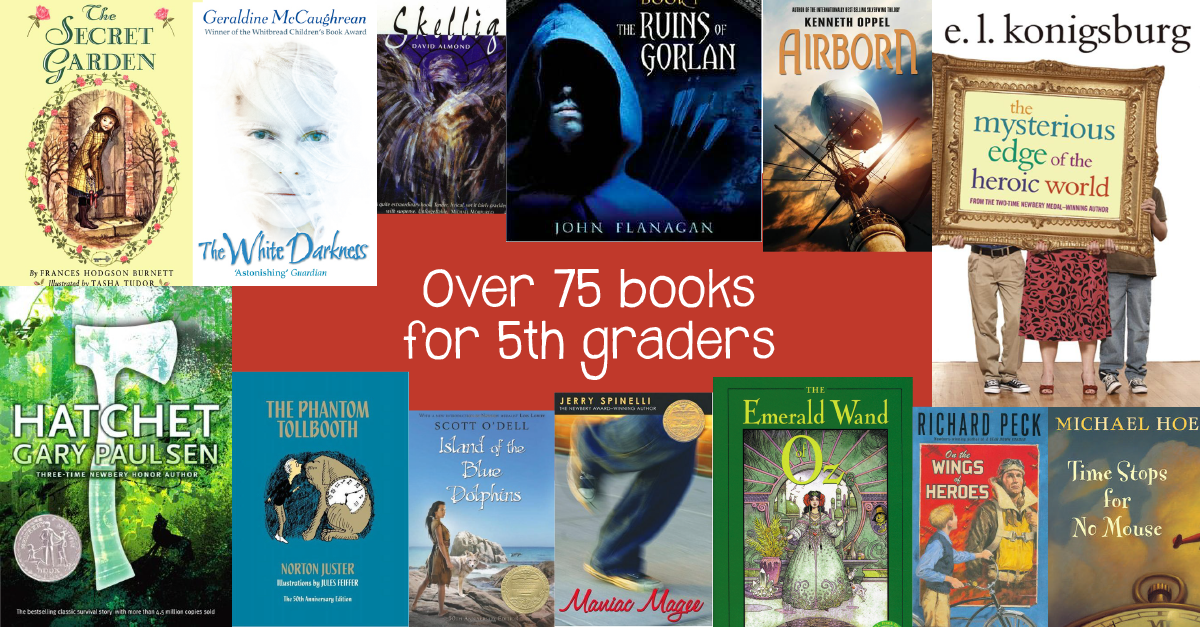
Increased self-esteem. There is no feeling that can be compared to when you finish reading your first book in English. Pride in yourself and understanding that much in the world is inaccessible without knowing English can become a strong motivation from the first to the last page.
English proficiency test
This English proficiency test was compiled by the Skysmart online school tutors. They prepared interesting and relevant tasks on modern topics to make the test both useful and interesting
How to read in English: life hacks
To keep the interest in reading in English at the very beginning, follow a few simple recommendations. These simple rules will help you make the reading process easier and more efficient.
1. The most important step is choosing the right book.
2. Set a reading schedule. Who among us has not heard “better more often, but less than once a week, but two hours at once”? So, this really works. Read every day for 20 minutes – so you do not hate the book after the first hour and a half reading session, and the efficiency will only grow. Start a timer. At first, read strictly for no more than 20 minutes – this method will help you quickly move forward at your comfortable pace.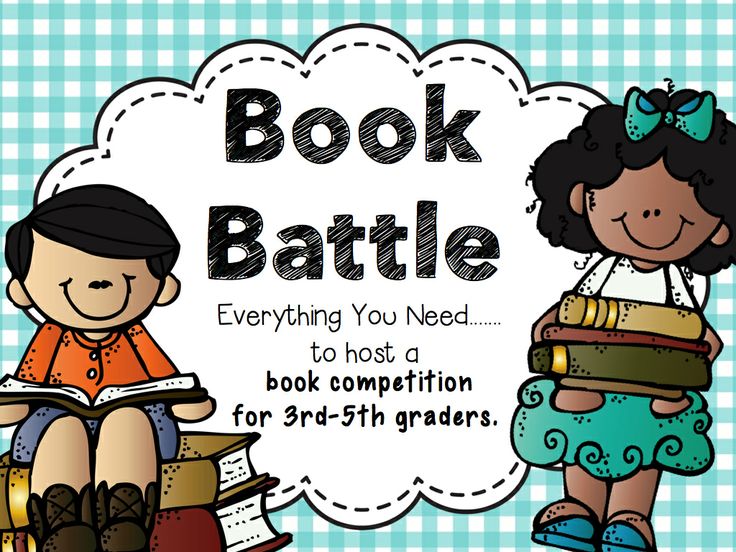
3. No dictionary. nine0960 If you have chosen the right book, and it fully corresponds to your level of English, there should be no need for a dictionary. Effective reading begins when the meaning of unfamiliar words is guessed from the context. Guess, guess, err, go back and guess again. But. None. Dictionaries.
4. Write out phrases, not single words. Memorize the whole phrase from the sentence, not individual words. From now on, context is your best friend. nine0005
5. Retell. This ancient practice goes back to the Druids and turns Elementary into Intermediate faster than an American can say a Russian tongue twister. After every 20 minutes of reading, summarize everything with a retelling.
6. Reinforce with listening. If the text is not only read, but also listened to, you will achieve maximum efficiency from the process.
New material is easier to learn when there is constant practice. Come to English language courses for teenagers and consolidate your knowledge in practice! nine0005
How many English words do you already know?
Let’s define your vocabulary – without complex questions and with the help of smart algorithms.
List of the best books to read in English
You can read not only fiction. Reading articles, magazine columns, newspapers, and even user manuals is also helpful and effective. But for those who are just starting to learn English, it is better to opt for fiction.
Even if you are not a reader in principle, it will not be difficult for you to find a book for beginners that will be of any interest to you. The choice among fiction is great and inexhaustible: children’s fairy tales, fantasy, detective stories, bestsellers, immortal classics, biographies, memoirs.
You need to progress in reading according to the level of the language: the higher the level, the more difficult the book. Start with an easy, adapted book, and when you feel ready to move on to more difficult books, choose from a variety of options according to your interests.
The variety of genres at the middle level is slightly higher than at the previous one. However, all the rules for effective reading at this level remain the same. The advanced level assumes that you are already “on you” with the chosen book, and you have access to the world of great literature. nine0005
Of course, there are a lot of rules and recommendations, but here’s the most important thing: remember that reading is the most enjoyable and exciting way to learn a language. Don’t treat books like hard work. Read with pleasure.
Level of difficulty for beginners
For beginners, there are many interesting books in English.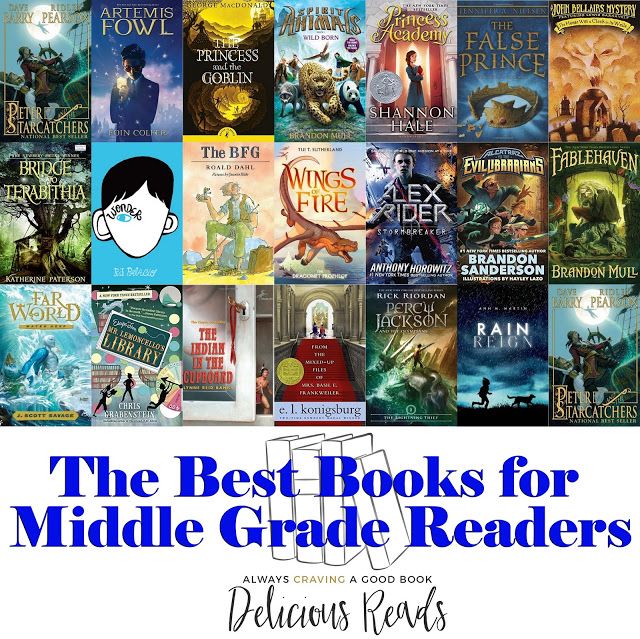
1. Anne of Green Gables by Lucy Maud Montgomery. “Anne of Green Gables”, Lucy Maud Montgomery. nine0960
A novel by a Canadian writer about Anne with two n’s: a red-haired girl adopted by a single brother and sister who live on a farm. A touching, exciting, full of funny and exciting moments, a book about love, honor, growing up, friendship. In total, three novels have been written about different periods of Anya’s life: from the most tender childhood to blossoming maturity. By the way, Netflix released the series “Ann” based on the novel – it will be great to read the book first, and then watch the film adaptation.
Source: Anne of Green Gables
2. Tracey Beaker’s Diary by Jacqueline Wilson. “Starring Tracy Beaker”, Jacqueline Wilson.
Perhaps all the books of this writer deserve to be read.
For a language beginner, Jacqueline Wilson’s books are a real treat. Easy language, an abundance of colloquial phrases, idioms and a plot that you can’t tear yourself away from. Tracey Beaker’s diary is Jacqueline’s star book. The quintessence of humor and unique author’s style. By the way, based on Tracy Beaker, a series was shot, the characters of which speak in simple language. Try to read first, and then get acquainted with the film adaptation. nine0005
Source: Tracy Beaker’s Diary
3. No such list is complete without Lewis Carroll and his Alice in Wonderland.
Find an edition of the book adapted for language learning according to the method of Ilya Frank – this is a text divided into paragraphs, accompanied by a translation and a dictionary.
Source: Alice in Wonderland
4. “Three men in a boat, not counting the dog”, Jerome. K. Jerome.
“Three Men in a Boat (To Say Nothing of the Dog)”, Jerome Klapka Jerome. This book is studied in the first years of linguistic faculties and, in general, it is clear why – easy, funny and very useful for the language. You will spend the whole story on the water surface of the Thames, in a boat with the main characters. Read, watch film adaptations – there are at least two of them. At the same time, you will find out how many heroes are still in the boat.
Source: Three in a boat, not counting the dog
Demo lesson in English
Determine the level and set a goal, and then learn to speak English fluently.
Intermediate
For Pre-Intermediate and Intermediate, the choice of books in English is much wider than for beginners.
5. Catcher in the Rye by Jerome Salinger. “The catcher in the Rye”, J.D. Salinger.
A cult item. A poignant, poignant story of Holden Colfid, a child of a lost generation. A rebellious teenager who doesn’t feel at home anywhere, drops out of another school and sets off to wander around winter New York. nine0005
Gets into adventures, shares his thoughts, makes the reader fall in love with himself, because each of us is a bit of Holden Caulfield. Even the classic translation of The Catcher in the Rye does not half convey the Salinger atmosphere of the novel. Reading a book in English is worth at least for this amazing sense of belonging.
Source: Catcher in the Rye
6. On the Road by Jack Kerouac. “On the road”, Jack Kerouac.
Novel-journey, endless hitchhiking across the USA in the early 50s. Together with the main character, you race along Route 60 in California, spend the night under the starry sky of Colorado, meet fellow writers in New York.
Source: On the Road
7. Harry Potter and the Philosopher’s Stone by J. Rowling. “Harry Potter and the Philosopher’s Stone”, Joanne Rowling.
That’s really who does not need ideas and descriptions. Lucky for someone who has not yet read Harry Potter, and this whole amazing tale is ahead of him. And if you have already read Potter from cover to cover in Russian, feel free to proceed with the book in English. There is nothing better than immersing yourself in your favorite fantasy world again.
Source: Harry Potter and the Philosopher’s Stone
8. Thirteen Reasons Why by Jay Asher. “Thirteen Reasons Why”, Jey Asher.
The cult Netflix series is based on this novel. A story that raises topical social problems in the life of adolescents around the world.
Source: Thirteen Reasons Why
9. The Lord of the Rings trilogy by John Tolkien. “The Lord of the Rings”, J. R. R. Tolkien. nine0960 As in the case of Harry Potter – a great opportunity to get acquainted with the Tolkien universe for those who are not yet familiar with it. And devoted Tolkienists who have mastered English at the Intermediate level will be able to plunge into it again, but already in the “true” one – that is, the original version.
Source: The Lord of the Rings
10. The Devil Wears Prada by Lauren Weisberger.
“The Devil wears Prada”, L. Weisberger. It seems that everyone has seen the adaptation with Anne Hathaway and Meryl Streep. The book in English is full of modern vocabulary, interesting phrases, idioms and constructions that you will have to rack your brains over.
Source: The Devil Wears Prada
11. Gone with the Wind by Margaret Mitchell. “Gone with the wind”, Margaret Mitchell.
Immortal classic, epic novel about war, love and friendship. It is read in one breath, both in translation and in the original. If you still haven’t heard about the brave Scarlett O’Hara, who “will think about everything tomorrow”, then rather start reading.
Source: Gone with the Wind
12. Such lists often include classic detective stories. Not in vain The Adventures of Sherlock Holmes and Hercule Poirot. “Sherlock Holmes stories”, Arthur Conan Doyle; “Hercule Poirot novels”, Agatha Christie occupy a special place among adapted literature. In addition to the fact that you are probably already familiar with many plots, the simple style of presentation and the availability of a dictionary in adapted editions will add ease and pleasure.








 M.: MTSNMO, 2000, 224 p., ISBN 5-
M.: MTSNMO, 2000, 224 p., ISBN 5- ru)
ru)
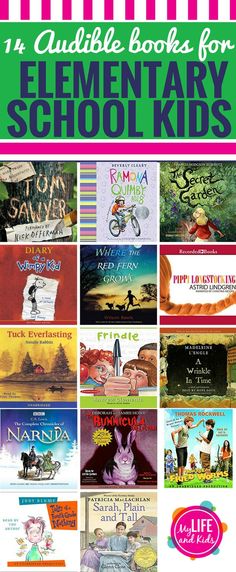 (c2)
(c2) (c2)
(c2) Balazar.
Balazar.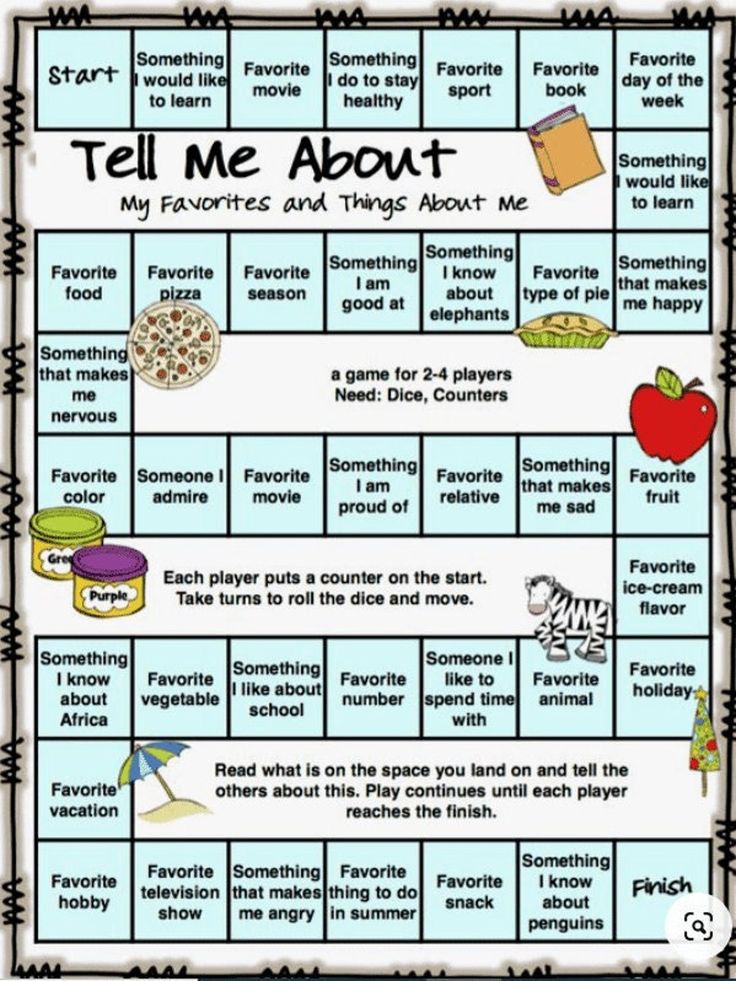
 (c1)
(c1)
 B. Gashkov.
B. Gashkov. , MTSNMO, 2017, 144 p.
, MTSNMO, 2017, 144 p. 1M) (c2)
1M) (c2)
 Dotsenko.
Dotsenko. 1M)
1M)

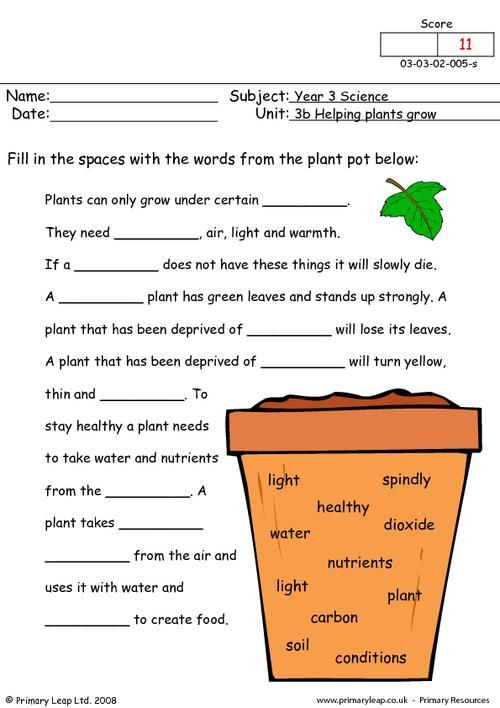
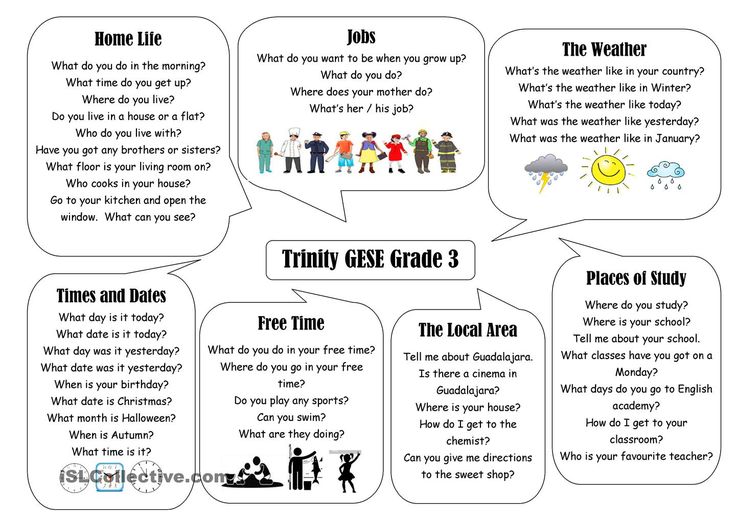 5M),
5M), M. Fedorov, A. Ya. Kanel-Belov, A. K. Kovaldzhi, and I. V. Yashchenko.
M. Fedorov, A. Ya. Kanel-Belov, A. K. Kovaldzhi, and I. V. Yashchenko.

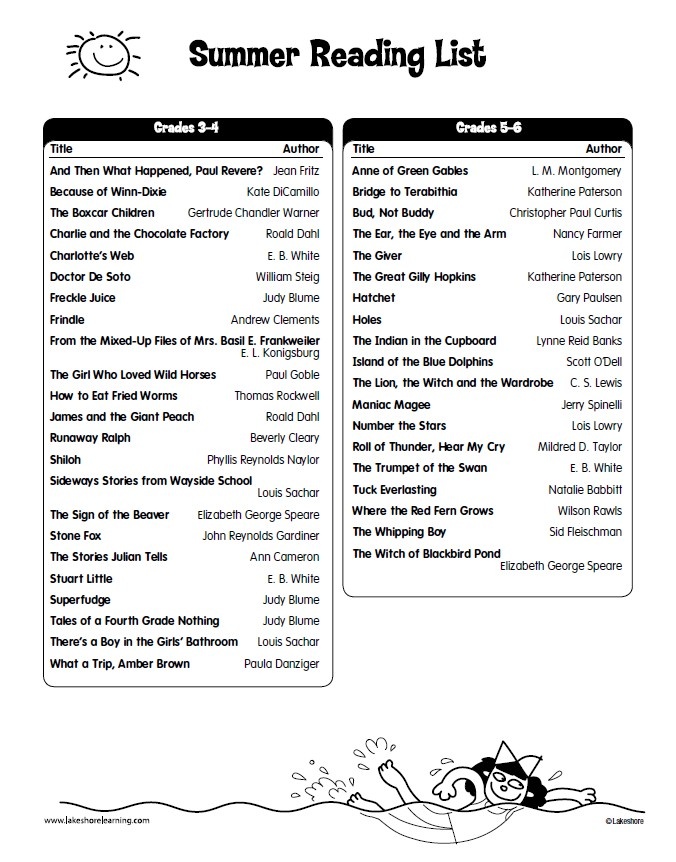
 nine0004(c2)
nine0004(c2) , MTSNMO, 2015.
, MTSNMO, 2015.
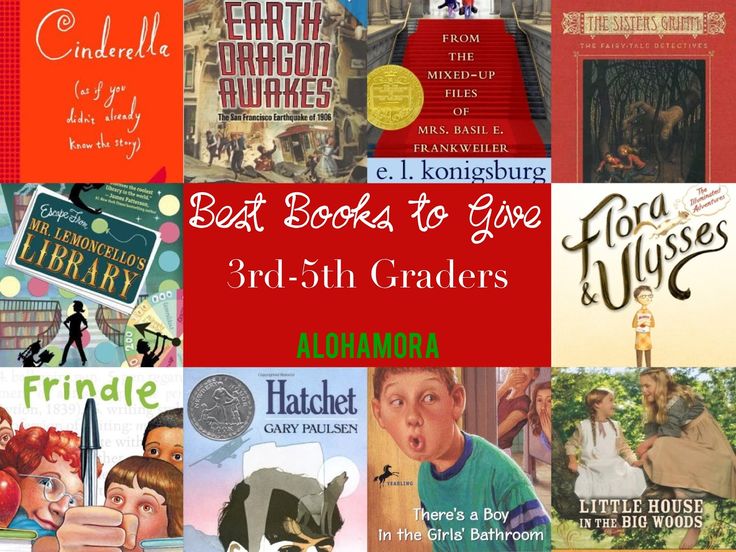 A. Timorin.
A. Timorin. Uspensky.
Uspensky. S. Holevo.
S. Holevo. , Moscow: MTsNMO, 2013, 24 p.
, Moscow: MTsNMO, 2013, 24 p. Shubin.
Shubin.